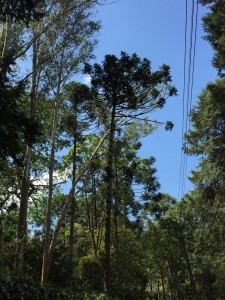Brazilian Arbor Day – September 21
Archaeopteris was the first tree to appear on Earth, but there is another tree that has been here for millions of years, since the time of dinosaurs. It is our Araucaria, also known as Paraná pine. The name comes from the Arauco region of central Chile, where Araucani Indians live.
Brazilian Tupi-Guarani Indians Brazil named it curi and the city of Curitiba means “place with lots of pine trees.” It appears more in the south of Brazil and today they are limited to the South of the American continent, Australia and New Caledonia.
Millions of years ago, before the ice age, they were in Antarctica and together with other conifers were dominant elements at this time. A conifer plant is the one that reproduces by its cones or pine cones. It is a group of very old plants and currently there are few species of these in comparison with the flowering plants (angiosperms) that appeared at the end of the Jurassic era.
The Araucaria was very exploited in the twentieth century for its excellent wood and its seeds (pine nuts) are edible and highly appreciated. They were part of the diet of Indians living in southern Brazil. Currently, only 3% of the ecosystem remains. The Araucaria is on the List of National Official Species of Flora Endangered, according to data from the Ministry of Environment, December 2014.
The task of Araucaria’s preservation has been difficult by the resistance of farmers in the South region that want all the land for their production. Efforts must continue to save this unique species. Its exclusive look in form of in candelabra shows how special and perfect it is to celebrate and illuminate this Arbor Day.
Source: Embrapa, Yuracuna
